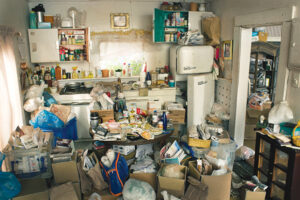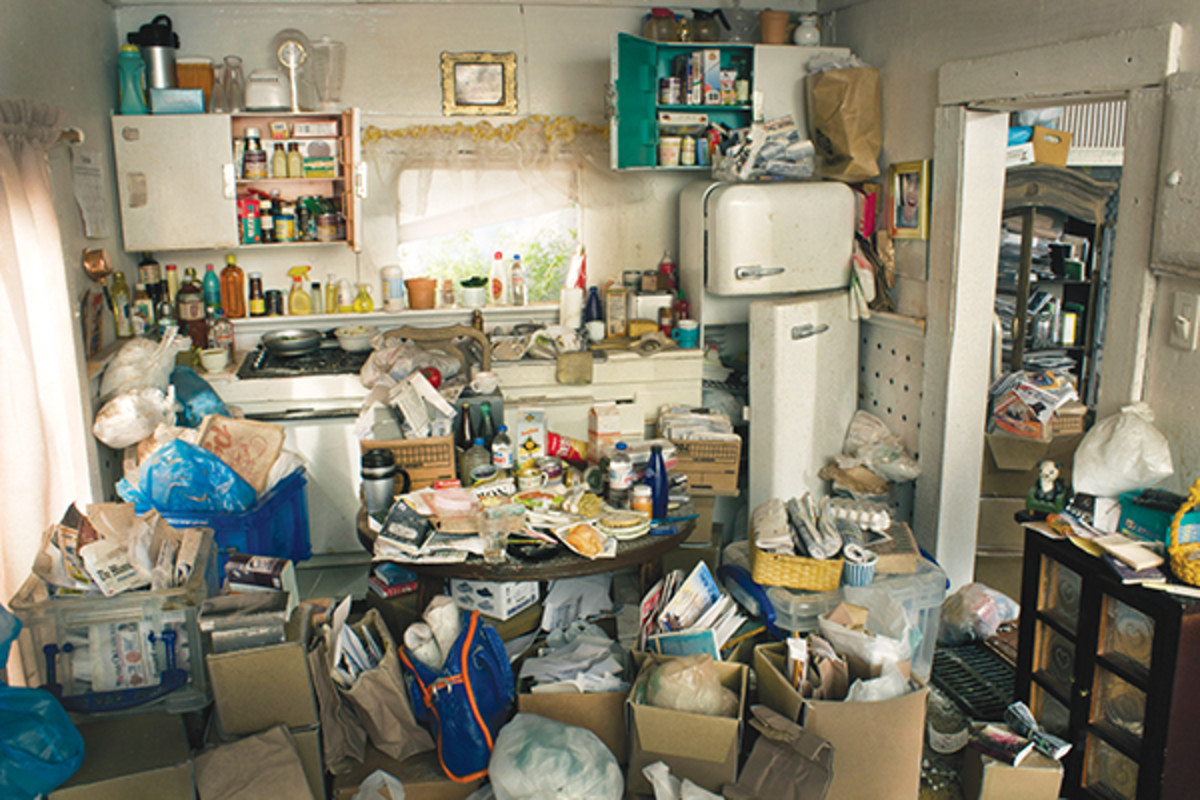
Many of us have areas of the house we wish were less cluttered.
The dining room table that doubles as an office space. The ping pong table that hasn’t seen a game in years. The unworkable work den.
Then there are those people whose houses are so stuffed with stuff that they become unlivable.
Picture a living room that resembles a landfill; or a bathtub so crammed with newspapers that bathing is impossible; or a refrigerator overflowing with spoiled food.
In these cases, the accumulation of material possessions reaches such an extreme that it can threaten a person’s health and create fire hazards or vermin infestations.
It’s called hoarding, and it’s a problem that even health professionals are struggling to fully understand.
“Hoarding is when collecting has gone bad,” said Mark Schroeter, a supervisor with the developmental services department at the Howard Center human services agency in Burlington. “Collectors have a collection that’s on display; hoarders just accumulate and accumulate and can’t stop.”
Schroeter is a member of the Chittenden County Hoarding Task Force, a group formed in 2009 to spread awareness of and help those suffering from compulsive hoarding, also known as pathological collecting.
Mike Ohler, another member of the Task Force, brings to the group first-hand experience working with hoarders through the Burlington Housing Authority.
“It’s not like it’s some new societal problem,” Ohler said of hoarding. “It’s been around for a long time; it’s just nobody’s ever discussed it before.”
Ohler said that while hoarding isn’t an officially characterized mental disorder at this point, it’s moving in that direction.
“We used to think hoarders were eccentric, and now we’ve come around to the point where, my understanding is, when they come out with a new DSM (Diagnostic and Statistical Manual of Mental Disorders), that hoarding is going to be on the OCD (obsessive-compulsive disorder) spectrum,” said Ohler.
Hoarding can be mentally (and, in extreme cases, physically) debilitating to those suffering from the condition, but when it begins to pose a health or safety threat to neighbors, it becomes a matter for safety code enforcement personnel to deal with.
“There are very clear guidelines about when something is dangerous or not,” said Deborah Dalton, a case management specialist with Burlington Code Enforcement. “Even if the person doesn’t believe that the way they’re living is dangerous to them, they often don’t understand that in an apartment/attached dwelling situation that the way that they’re living actually affects everyone in the building.”
Dalton said her participation in the Task Force has taught her to have patience with hoarders.
“It’s been great to work with the Hoarding Task Force, because you really do begin to understand that these issues sometimes take time, so if you can clear up the immediate safety issues, then some of the other things can follow on their own,” Dalton said.
Brooke Hadwen, director of the Community Support Program at the Burlington Police Department, thinks some people hoard because they perceive a potential value to items other people throw away.
“It’s sort of culturally supported,” said Hadwen. “We’re supposed to have a lot of stuff, we’re supposed to go out and buy, we’re supposed to accumulate. We live in a culture in which stuff can bring us financial reward … so if you find that thing, and you can sell it to the right person, you can make money.”
Sara Miller, a case manager with the Champlain Valley Agency on Aging, said hoarding tendencies and the perceived value of worthless items can be particularly acute among the elderly.
“One of the things that fascinates me is I look at something – or society in general would look at something – and say it’s trash,” said Miller, “but 8 out of 10 times, (a hoarder) looks at it and sees potential and value.”
Miller said hoarding can manifest itself differently in different people and that one of the difficulties of her job is determining an individual’s self-awareness of a hoarding problem.
“It is extremely difficult,” she said. “Many of the clients are very much aware that there is an issue; some are very embarrassed about it; some are very defiant about it; some don’t acknowledge it at all.”
Schroeter observed that it is often effective to use a “good cop/bad cop” approach with hoarders, by first having a code enforcement officer threaten them with eviction, and then having a social worker assist with the emotional process of dispensing with one’s possessions.
That strategy can work with hoarders living in apartments, but for hoarders who own their own homes a family-initiated intervention is sometimes required.
“A lot of the times when we do an intervention it’s to help move them along to see that (hoarding) is affecting them in a negative way,” Schroeter said. “You have to determine if a person is in a pre-contemplative stage, and if they are, they’re not really seeing that they have an issue, so they’re not really ready to tackle it or try to resolve it.”
Schroeter stressed that a hoarder has to be willing to make a change for the Task Force’s efforts to have a lasting impact.
“One rule that we pass on is: don’t work any harder than the client,” he said. “Because you can do all the work, but it doesn’t really change the behavior.”
This article was contributed by Luke Baynes.
 Related Articles & Free Subscription
Related Articles & Free Subscription
Hoarding and Clutter Solutions for the Elderly
Improve the Storage Capacity of Kitchen Cabinets








Comment here